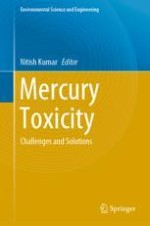2023 | OriginalPaper | Buchkapitel
7. Removal of Mercury from Wastewater by Different Natural Biomasses
verfasst von : Rakesh Pant, Umangjit Kaur, Sunidhi Shreya, Nirmal Patrick, Amit Gupta
Erschienen in: Mercury Toxicity
Verlag: Springer Nature Singapore
Aktivieren Sie unsere intelligente Suche, um passende Fachinhalte oder Patente zu finden.
Wählen Sie Textabschnitte aus um mit Künstlicher Intelligenz passenden Patente zu finden. powered by
Markieren Sie Textabschnitte, um KI-gestützt weitere passende Inhalte zu finden. powered by
